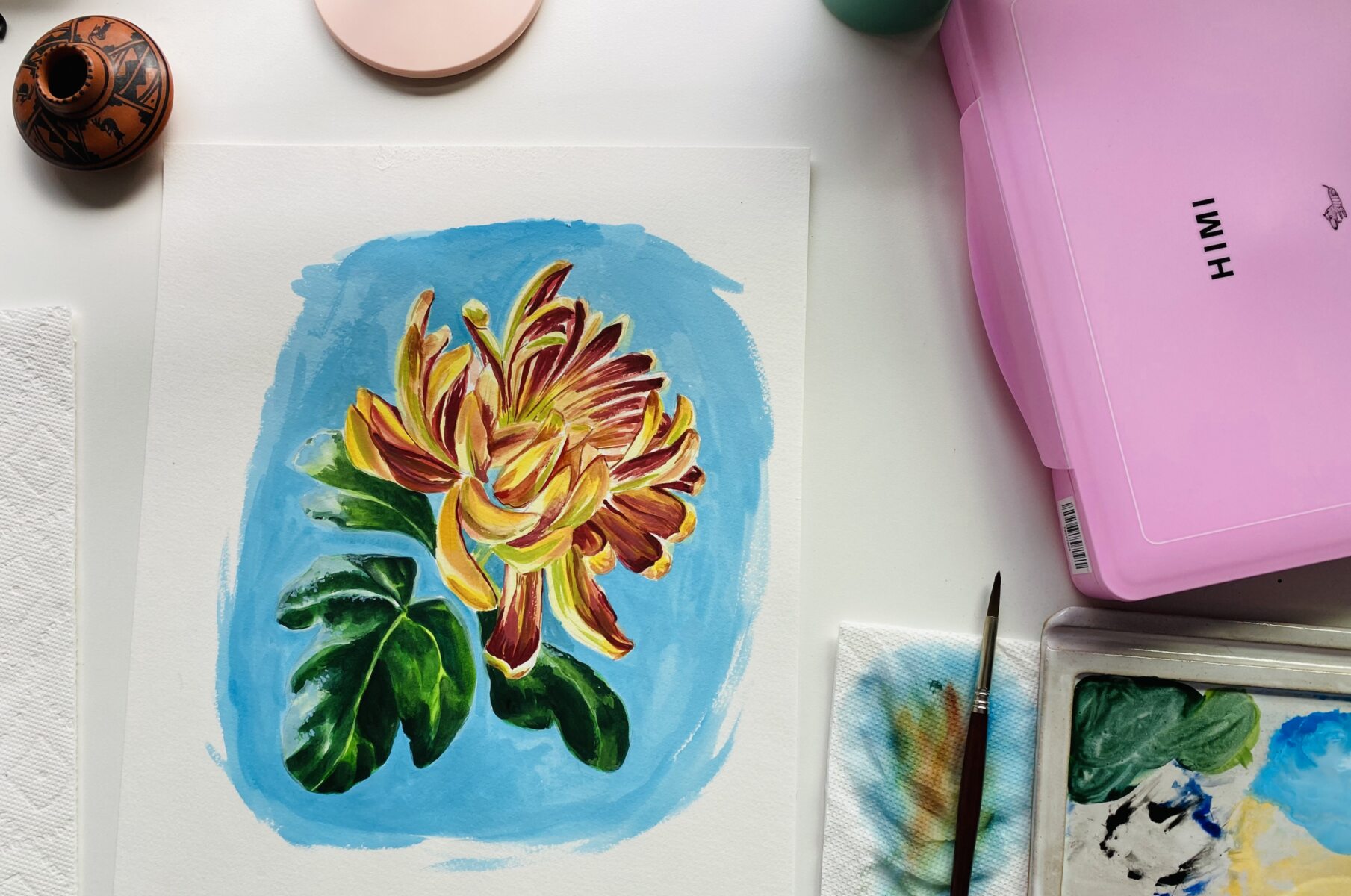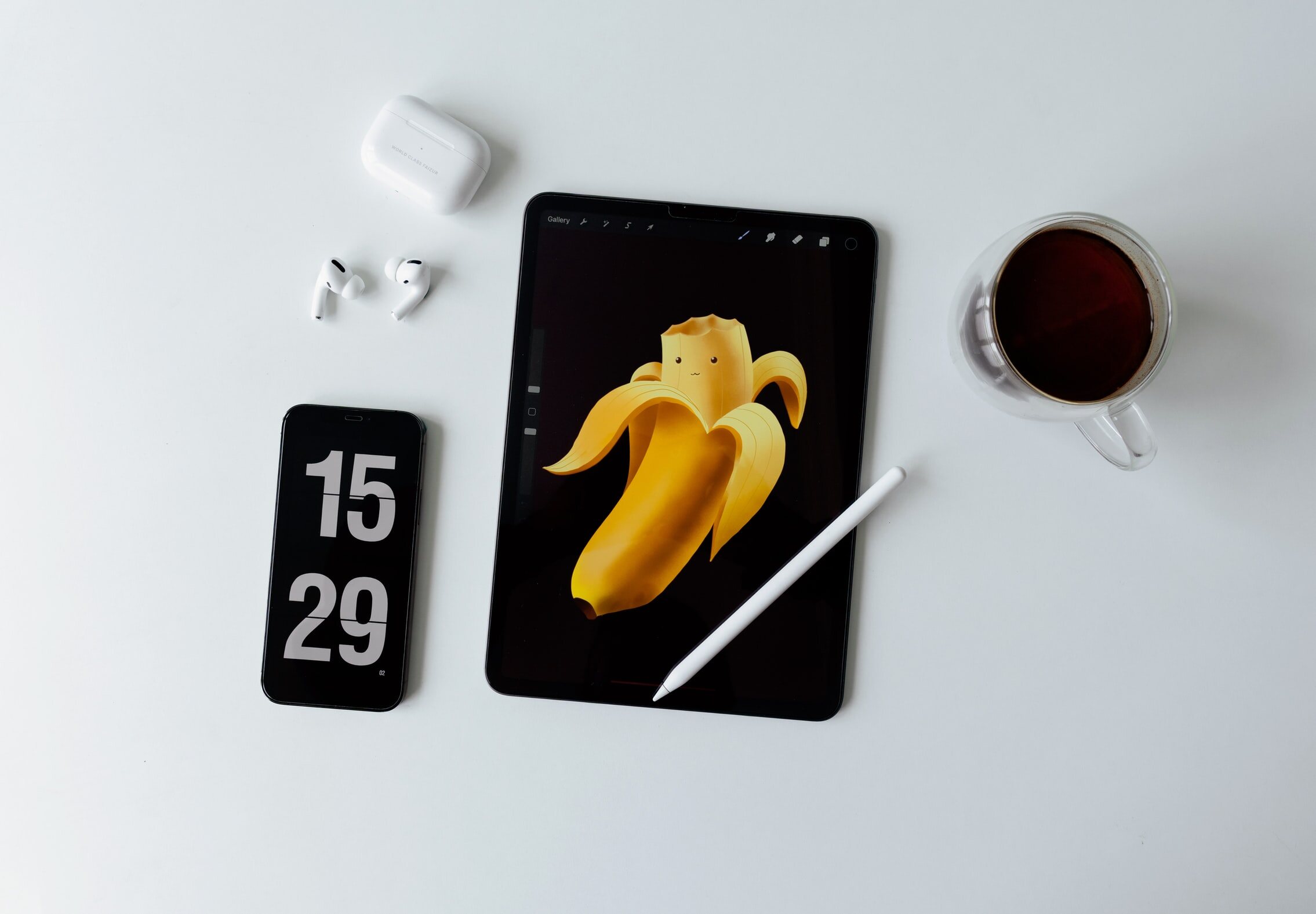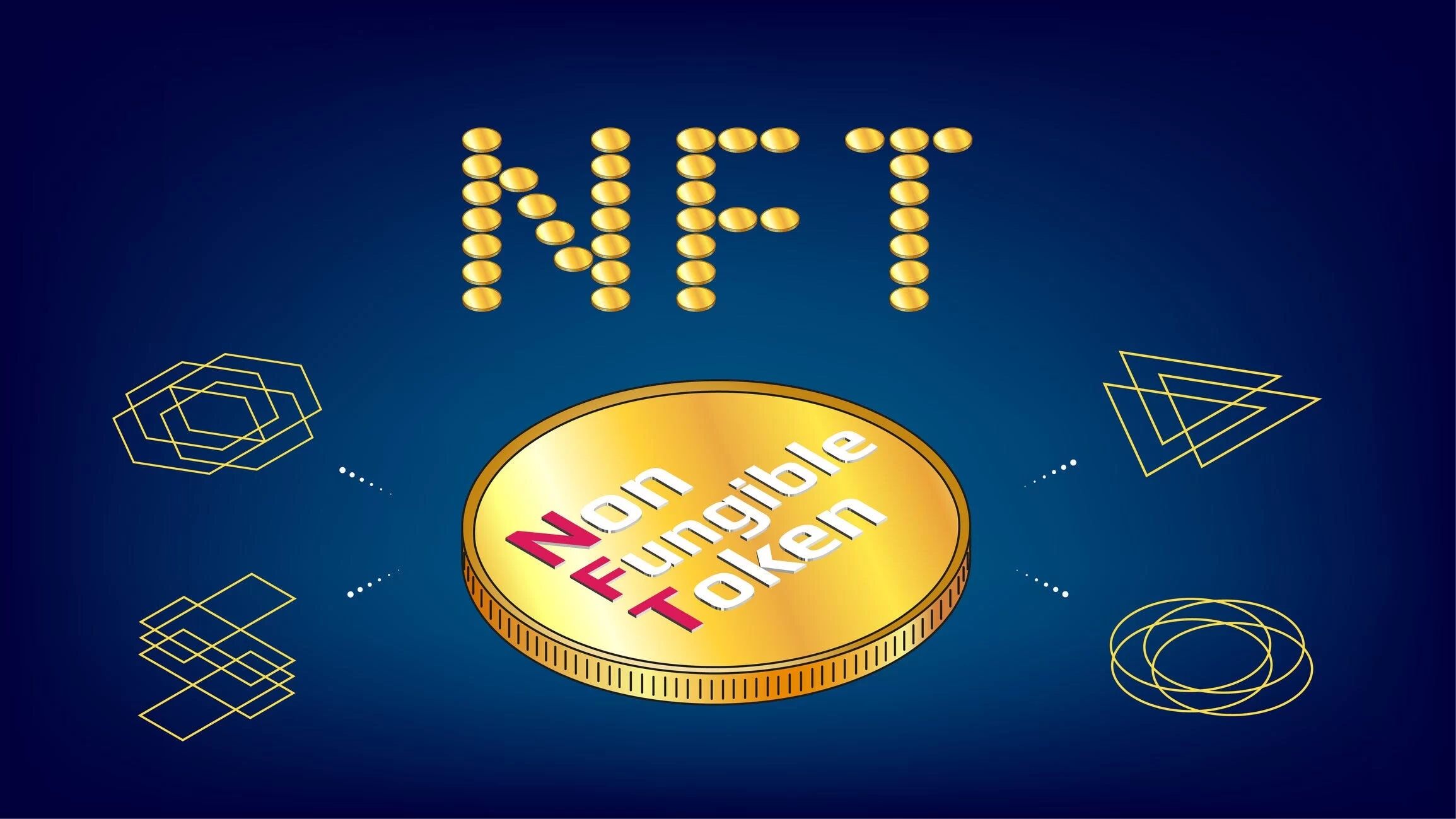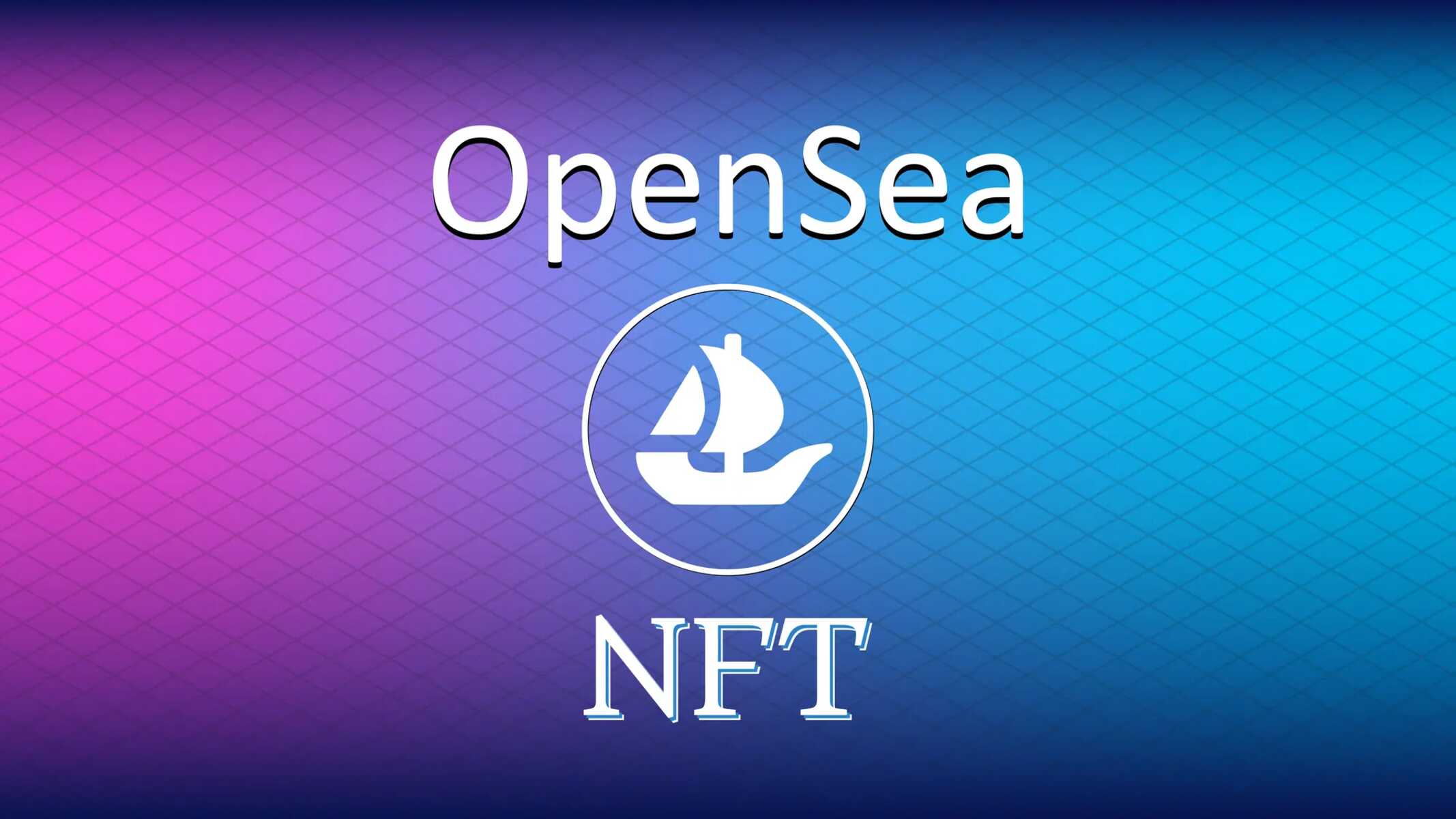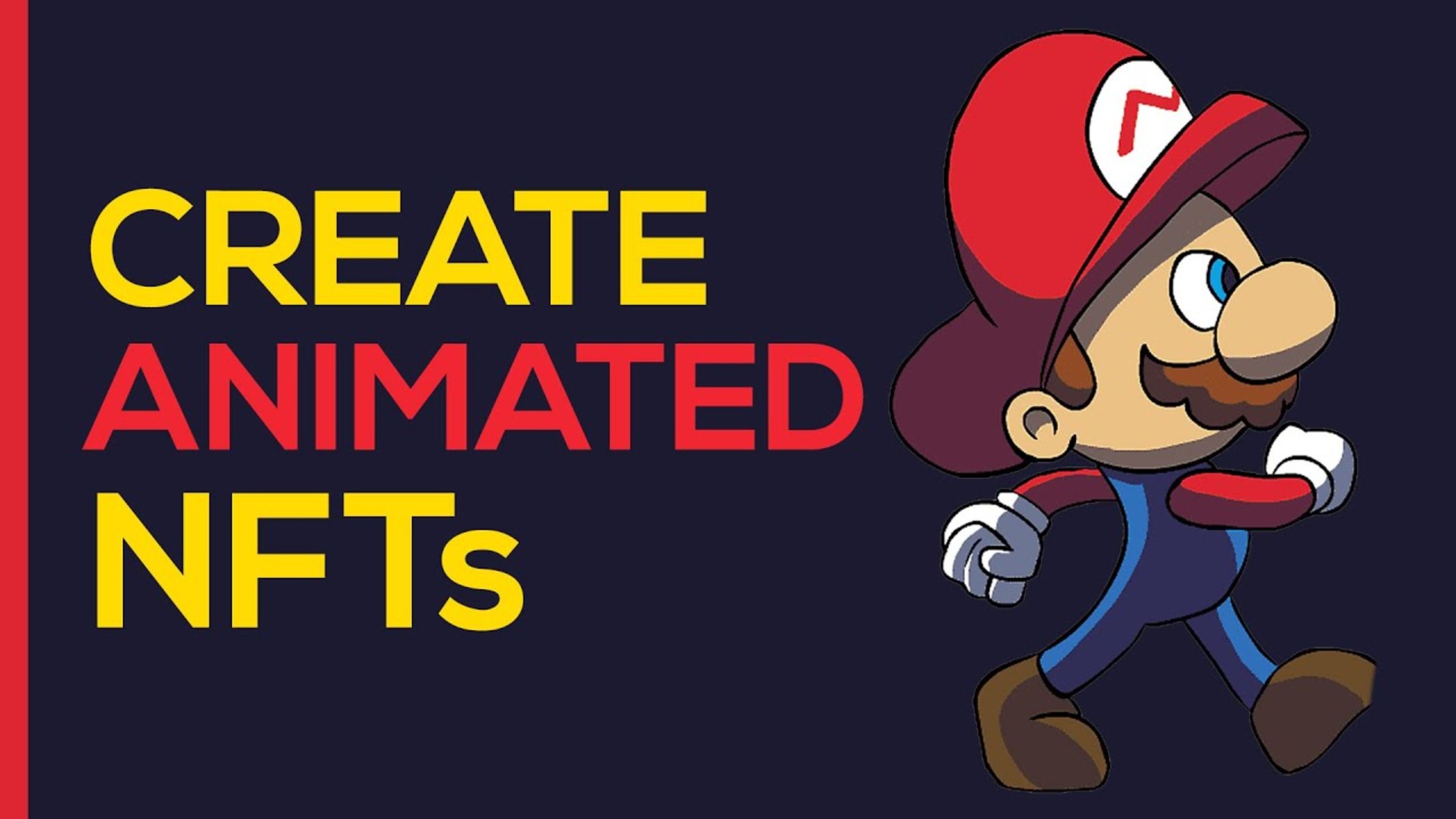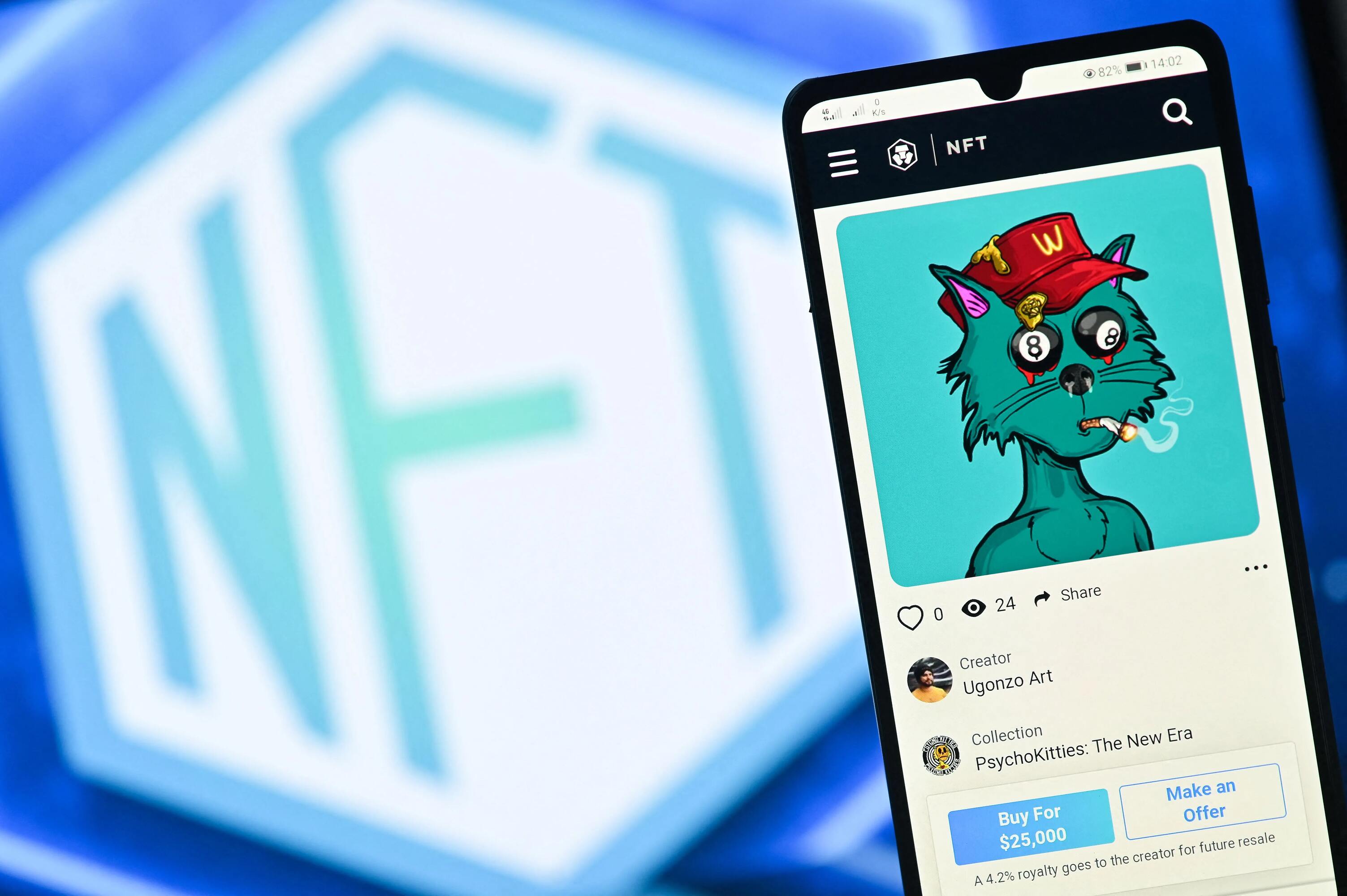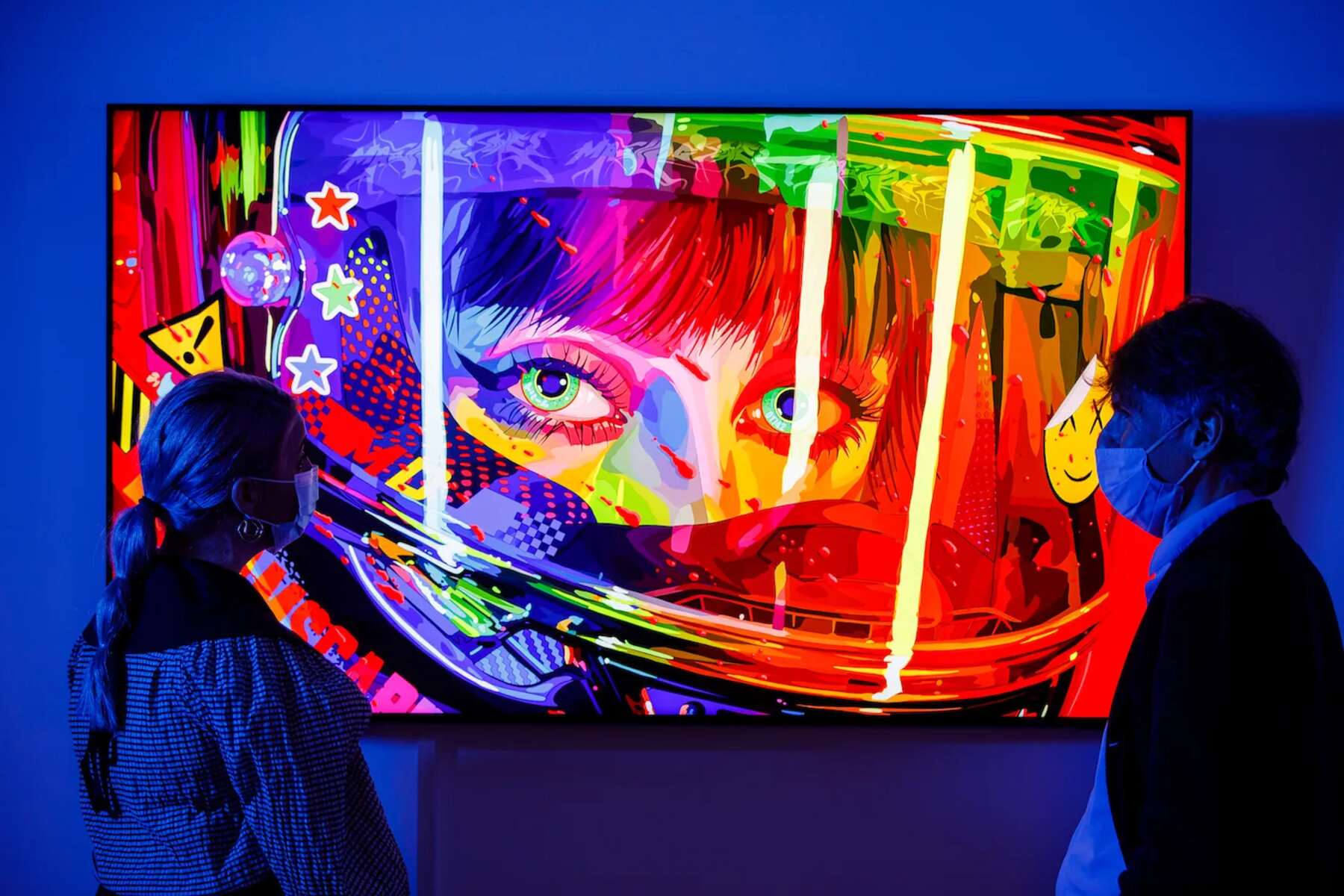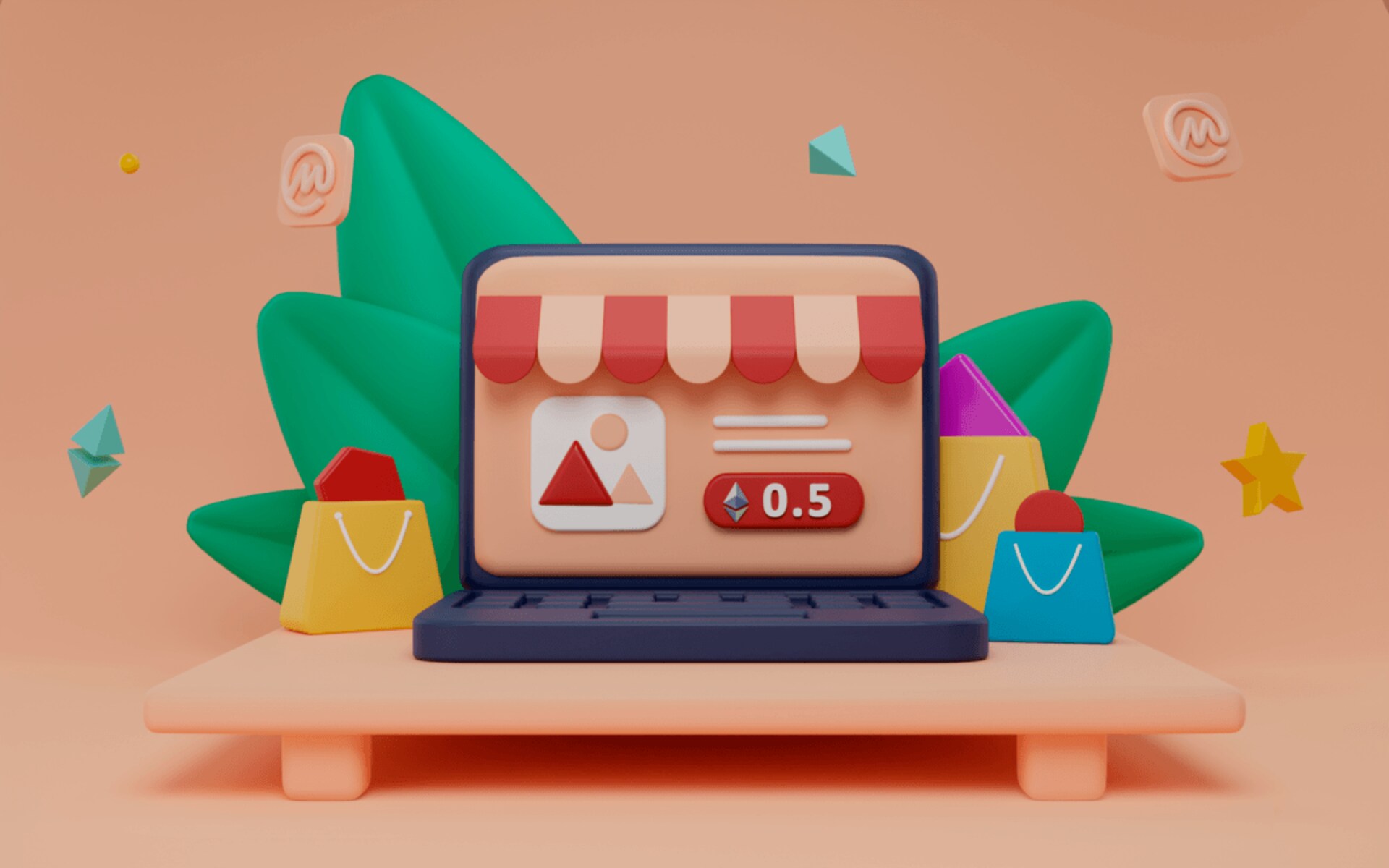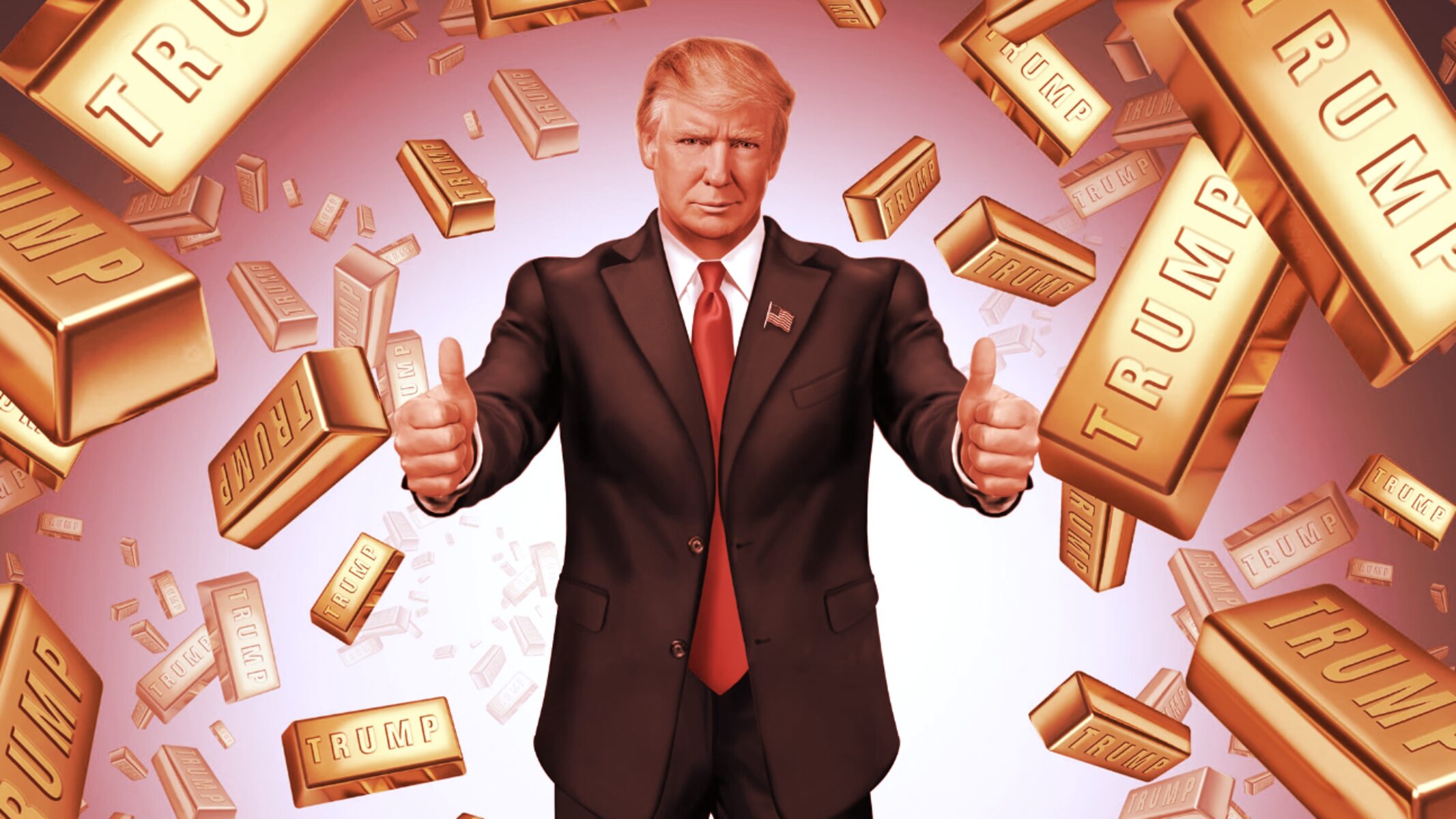Introduction
Welcome to the exciting world of NFTs! If you’re an artist looking to expand your reach and monetize your artwork in a unique way, turning your creations into NFTs can open up a whole new realm of possibilities. NFTs, or Non-Fungible Tokens, have gained significant popularity in recent years, revolutionizing the art market and providing artists with new avenues for showcasing and selling their work.
But what exactly is an NFT? In simple terms, an NFT is a digital asset that represents ownership or proof of authenticity of a unique item, such as artwork, music, videos, or even virtual real estate. Unlike cryptocurrencies like Bitcoin or Ethereum, which are fungible and can be exchanged on a one-to-one basis, NFTs are indivisible and cannot be replaced by something else of equal value.
The concept of NFTs relies on blockchain technology, specifically on platforms such as Ethereum, which offer a secure and transparent way of recording the ownership and transaction history of digital assets. This digital scarcity and verifiability make NFTs highly sought after by collectors and art enthusiasts worldwide.
In this article, we will explore the benefits of turning your artwork into NFTs, as well as guide you through the process of minting your artwork and successfully selling it as an NFT. So, if you’re ready to dive into this exciting new frontier of the art world, let’s get started!
What is NFT?
If you’re new to the world of NFTs, you may be wondering what exactly they are and why they have become such a hot topic in recent times. As mentioned earlier, NFT stands for Non-Fungible Token. To understand what makes an NFT unique, let’s break down the term.
First, let’s talk about “fungible.” In the world of finance, fungible refers to assets or goods that can be traded or exchanged on a one-to-one basis. This means that one unit of a fungible item is essentially the same as any other unit of that same item. For example, a dollar bill is fungible because you can exchange it for another dollar bill, and the value remains the same.
On the other hand, non-fungible items are unique and cannot be exchanged equally. Each non-fungible item has distinctive characteristics that set it apart from others. For example, a piece of artwork, a rare collectible, or an antique car are all non-fungible because they possess unique attributes that differentiate them from one another.
Now, let’s add the concept of a token. In the realm of blockchain technology, a token represents ownership and can be used to prove the authenticity and scarcity of a digital asset. In the case of NFTs, tokens are used to denote ownership of a specific unique item, whether it’s a digital artwork, a music album, or even a virtual item within a video game.
The rise of NFTs can be attributed to the advancements in blockchain technology, particularly the Ethereum blockchain. Ethereum allows for the creation and execution of smart contracts, which are self-executing contracts with the terms directly written into the code. These smart contracts enable artists and creators to program unique attributes into their NFTs, such as limited editions or royalties, giving them greater control over their work.
With the blockchain acting as a decentralized ledger, every NFT transaction and ownership transfer is recorded and easily traceable. This transparency and immutability greatly enhance the trust and security surrounding the ownership and provenance of digital assets.
In the next sections, we will delve deeper into the benefits of turning your artwork into NFTs and guide you through the process of minting and selling your NFT art. So, let’s move on to the exciting possibilities that await you in the world of NFTs!
The Benefits of Turning Artwork into NFTs
Turning your artwork into NFTs can offer a myriad of benefits for artists. Let’s explore some of the key advantages:
- Increased Reach and Exposure: By minting your artwork as an NFT, you can showcase your creations to a global audience. NFT platforms provide visibility and exposure to a vast community of collectors, art enthusiasts, and investors who may not have discovered your work otherwise.
- Ownership and Authenticity: NFTs provide a secure and verifiable way to prove the ownership and authenticity of your artwork. The blockchain technology behind NFTs ensures that each token is unique, with the ownership recorded on the decentralized ledger, giving your buyers confidence in the legitimacy of their purchase.
- Increased Value and Revenue: NFTs have the potential to unlock new revenue streams for artists. When you sell an NFT, you can include a royalty fee, allowing you to earn a percentage of future sales of your artwork. This continuous revenue stream can be particularly advantageous if your artwork gains popularity and increases in value over time.
- Control over Licensing and Usage: As an artist, you retain control over how your artwork is licensed and used. Smart contracts can be programmed into NFTs to outline the terms of use, ensuring that your artwork is not reproduced or utilized without your permission. This level of control helps protect your intellectual property rights and allows you to dictate how your artwork is shared and enjoyed.
- Engagement and Community Building: NFT platforms often provide opportunities for artists to engage with their audience and build a dedicated community. This can include hosting virtual exhibitions, collaborating with other artists, or participating in interactive events. Building a community around your artwork can lead to increased support, collaborations, and even commissions.
These benefits make turning your artwork into NFTs an enticing proposition for artists looking to break through traditional barriers and explore the possibilities of the digital art market. In the following sections, we will guide you through the process of creating and selling your NFTs, so you can make the most of this exciting new frontier in the art world.
Choosing the Right Platform for NFT Creation
When it comes to turning your artwork into NFTs, choosing the right platform is crucial. There are several factors to consider when selecting a platform for NFT creation. Let’s explore some key considerations:
- Compatibility: Ensure that the platform you choose is compatible with the blockchain technology you wish to use. Ethereum is the most common blockchain for NFTs, but other blockchains like Binance Smart Chain and Flow are gaining popularity. Verify that the platform supports the blockchain you prefer to work with.
- User-Friendly Interface: Look for a platform that offers a user-friendly interface, making it easy for you to mint and manage your NFTs. An intuitive platform design and simple navigation can save you time and eliminate frustration during the creation process.
- Community and Audience: Consider the platform’s user base and community. A platform with an active and engaged community can provide valuable networking opportunities and help increase the visibility of your artwork. Research the platform’s reputation, reach, and market presence before making a decision.
- Fees and Costs: Take into account the fees and costs associated with minting and selling your NFTs on the platform. Some platforms charge a flat fee per transaction, while others employ a percentage-based fee structure. Evaluate the costs and ensure they align with your budget and revenue expectations.
- Smart Contract Customization: If you desire more control over your NFTs, consider a platform that allows for smart contract customization. This feature enables you to program additional attributes, such as royalties or unlockable content, into your NFTs, providing added value and flexibility.
- Secondary Market Support: Explore the platform’s support for the secondary market. If you foresee your artwork being resold, make sure the platform has an active marketplace or integration with popular NFT marketplaces. This can enhance the liquidity and resale potential of your NFTs.
Researching and comparing different platforms based on these factors will help you make an informed decision. Some popular platforms for NFT creation include OpenSea, Rarible, SuperRare, and Mintable, among others. Don’t be afraid to explore multiple platforms to find the one that best aligns with your goals and requirements.
Keep in mind that the NFT space is constantly evolving, with new platforms emerging and established platforms evolving their features. Stay informed about the latest developments and advancements to ensure you’re maximizing the potential of your NFT creations.
The Process of Turning Artwork into NFT
Now that you’ve selected the platform to create your NFTs, let’s explore the process of turning your artwork into an NFT. While the exact steps may vary depending on the platform you choose, the overall process typically involves the following:
- Prepare Your Artwork: Start by preparing your artwork for digital submission. This may involve scanning or photographing your physical artwork in high resolution. Pay attention to lighting, angles, and capturing the true essence of your artwork. If creating digital artwork, ensure it is saved in the appropriate file format and quality.
- Create an Account: Sign up for an account on the chosen NFT platform. Provide the required information and verify your account, if necessary. Some platforms may require additional verification steps to ensure security and authenticity.
- Upload Your Artwork: Find the option to upload your artwork on the platform. Follow the instructions provided, which may include specifying the file format, adding a title and description, and attaching relevant metadata such as artist name, creation date, and any additional details you wish to include.
- Set Desired Attributes: Determine the desired attributes for your NFT. This can include edition size, royalties, unlockable content, and other unique features. Some platforms allow smart contract customization, enabling you to program these attributes directly into your NFT.
- Mint Your NFT: Once you’ve filled in the necessary details and confirmed the attributes, proceed to mint your NFT. This process involves creating a unique token on the blockchain, representing your artwork and its ownership. Depending on the platform, a fee may be required to complete the minting process.
- Review and Verify: After minting, review your NFT listing and ensure all information is accurate. Verify that your artwork is displayed correctly, and double-check the title, description, and any additional details. This step is important to maintain the integrity and professionalism of your NFT listing.
Once these steps are completed, your artwork is officially transformed into an NFT, ready to be showcased and sold on the platform. Take pride in your creation and share the news of your NFT launch across your social media channels and art communities to generate interest and visibility.
Remember, the process of turning artwork into NFTs can be an iterative one, and you can create multiple NFTs from various artworks. Experiment with different styles, editions, and attributes to offer a diverse range of NFTs and cater to different collectors and art enthusiasts.
In the next sections, we will delve into the specifics of preparing your artwork, minting your NFT, and setting a price for your NFT artwork, so you can successfully navigate the exciting world of NFT creation and sales.
Steps to Prepare Your Artwork for NFT Creation
Before you transform your artwork into an NFT, it’s essential to ensure that it is prepared appropriately. The steps to prepare your artwork for NFT creation are as follows:
- Clean and Enhance: If you’re working with traditional artwork, make sure it is clean and free from any dust, smudges, or imperfections. If needed, consider enhancing the colors or details using image editing software.
- High-Quality Photography or Scanning: For physical artwork, capture high-quality photographs or scans of your artwork. Use professional photography equipment or a high-resolution scanner to achieve sharp and accurate images. Ensure good lighting and proper framing to capture the essence of your artwork.
- Editing and Cropping: Once you have digital images, review them and make any necessary edits or adjustments. Crop the image to remove any distracting elements and focus on the artwork itself.
- Resolution and Formats: Save your artwork in the appropriate digital format, such as JPEG or PNG. Ensure that the resolution is high enough to showcase the details and nuances of your artwork when displayed online, typically 300 dpi or higher.
- Metadata and Documentation: Gather relevant information about your artwork, such as the title, description, size, medium, and any other details you wish to provide. This metadata will accompany your NFT listing and help potential buyers understand and appreciate your artwork.
- Watermarking (Optional): Consider watermarking your images before sharing them online. This can help protect your artwork from unauthorized use or duplication. Place a subtle watermark in one corner of the image, ensuring it doesn’t detract from the overall viewing experience.
- Ownership and Copyrights: If you haven’t already, consider registering your artwork with a copyright office or protecting it through appropriate legal channels. This step helps safeguard your intellectual property and provides you with legal recourse should any infringement occur.
Following these steps will ensure that your artwork is well-prepared and ready for the NFT creation process. Remember, the presentation of your artwork plays a crucial role in attracting potential buyers and collectors. Take the time to capture the essence and beauty of your artwork, as it will greatly enhance its appeal in the digital marketplace.
In the next sections, we will guide you through the step-by-step process of minting your artwork as an NFT and setting a price and terms for your NFT artwork, so you can successfully venture into the world of NFT creation and sales.
Step-by-Step Guide to Minting Your Artwork as an NFT
Now that your artwork is prepared, it’s time to mint it as an NFT. Minting is the process of creating a unique token on the blockchain that represents your artwork. Follow this step-by-step guide to successfully mint your artwork as an NFT:
- Select an NFT Platform: Choose an NFT platform that aligns with your goals and requirements. Popular platforms include OpenSea, Rarible, SuperRare, and Mintable. Create an account and verify it, if necessary.
- Connect Your Wallet: Most NFT platforms require you to connect a digital wallet, such as MetaMask, to facilitate the minting and transactions. Install and set up a compatible wallet, fund it with the required cryptocurrency (usually Ethereum), and connect it to your NFT platform account.
- Access the Minting Area: Navigate to the minting area or section of your chosen platform. This is where you’ll initiate the process of creating your NFT.
- Upload Your Artwork: Locate the option to upload your artwork on the platform. Follow the instructions provided, which may include attaching the image file, entering the title and description, and specifying any additional attributes such as royalties or unlockable content.
- Choose Edition Size (Optional): If you want to create a limited edition NFT, determine the number of copies available for sale. Specify the desired edition size in the minting process. This can add rarity and exclusivity to your NFT.
- Review and Confirm: Review all the details you’ve provided for your NFT, including the title, description, artwork, and any additional attributes. Ensure everything is accurate and in line with your intentions. Once satisfied, confirm the minting process.
- Paying Minting Fees: Pay the minting fees associated with creating your NFT. This typically involves a transaction fee in the form of gas fees on the blockchain. The fees may vary depending on the platform and the prevailing network conditions.
- Wait for Confirmation: After paying the fees, wait for the transaction to be confirmed on the blockchain. This can take a few minutes to several hours, depending on the blockchain’s congestion. Be patient and do not interrupt the process.
- Your NFT is Minted: Once the transaction is confirmed, your artwork is officially minted as an NFT. It will receive a unique token ID and will be visible on the blockchain and the NFT platform.
Congratulations! You have successfully minted your artwork as an NFT. Take pride in your creation and share the news with your followers and art community to generate interest and potential buyers for your NFT.
In the following sections, we will guide you through the process of setting a price and terms for your NFT artwork and provide insights on promoting and selling your NFTs, so you can navigate the fast-paced world of NFT sales with confidence.
Setting a Price and Terms for Your NFT
Once you have minted your artwork as an NFT, the next step is to determine the price and terms at which you will sell your NFT. Setting the right price is crucial to attract potential buyers and ensure the value of your artwork is accurately represented. Here’s a step-by-step guide on how to set a price and terms for your NFT:
- Evaluate Market Trends: Research the current market trends and prices for similar artwork in the NFT space. Take note of the average prices for artworks of similar quality, style, and popularity. This will provide you with a reference point to determine a fair price for your NFT.
- Consider Your Reputation and Experience: Take into account your reputation and experience as an artist. If you are an established artist with a strong following, you may be able to command higher prices for your NFTs. On the other hand, if you are a new artist seeking exposure, pricing your NFTs more competitively may attract a larger audience.
- Calculate Production Costs: Factor in the production costs associated with creating your artwork. Consider the time, effort, and resources invested in the creation process. This can include the cost of materials, equipment, and any specialized techniques used. Ensure that the price adequately covers your production expenses.
- Include Royalties: One advantage of NFTs is the ability to earn royalties on subsequent sales. Decide whether you want to include a royalty fee in your NFT. This fee allows you to earn a percentage of any future sales of your artwork. Consider the percentage that is fair and reasonable while keeping in mind the potential impact on the attractiveness of your NFT.
- Define Licensing and Usage Terms: Determine the licensing and usage terms for your NFT. Decide whether you want to allow the buyer to display the artwork publicly, use it for commercial purposes, or retain control over its usage rights. Clearly outline these terms to avoid any confusion or disputes with buyers.
- Consider Auctions or Fixed Pricing: Decide whether you want to sell your NFT through an auction or set a fixed price. Auctions can generate excitement and potentially lead to higher bids, while fixed pricing offers a straightforward buying experience. Choose the option that aligns with your goals and strategy as an artist.
- Promotional Offers and Bundles: Consider offering promotional deals or bundles for your NFTs. This can include limited-time discounts, package deals with multiple artworks, or exclusive perks for early buyers. These offers can help attract buyers and create a sense of urgency around your NFTs.
Remember that pricing your NFT is not a one-time decision. Monitor the market, observe buyer reactions, and be open to adjusting the price if necessary. Flexibility and adaptability are key in the ever-evolving NFT space.
In the next section, we will explore strategies for promoting and selling your NFT artwork, helping you reach a wider audience and maximize your chances of success in the NFT marketplace.
Promoting and Selling Your NFT Artwork
Once you have minted your artwork as an NFT and set a price, it’s time to promote and sell your NFTs. Effective promotion is crucial to attract potential buyers and generate interest in your artwork. Here are some strategies to help you successfully promote and sell your NFT artwork:
- Utilize Social Media: Leverage the power of social media platforms to showcase your NFT artwork. Share high-quality images or videos of your artwork, along with engaging captions and relevant hashtags. Engage with your followers, respond to comments, and build a community around your artwork.
- Create a Website or Portfolio: Build a dedicated website or online portfolio to showcase your NFT artwork. Display your NFTs, provide information about your artistic journey, and include contact information for potential buyers. Make sure your website is visually appealing, easy to navigate, and showcases your work effectively.
- Collaborate with Influencers or Collectors: Collaborate with influencers or well-known collectors in the NFT space. Partnering with influencers can expose your NFT artwork to their audience and help generate interest. Engage in conversations with collectors and art enthusiasts in online communities to build relationships and gain visibility.
- Participate in Virtual Exhibitions or Events: Virtual exhibitions and events provide an excellent platform to showcase your NFT artwork. Look for curated exhibitions, online galleries, or virtual art fairs that align with your artistic style and genre. Participating in these events can help you gain exposure and connect with potential buyers.
- Network with Other Artists: Collaborate and network with other artists in the NFT community. Participating in joint NFT drops, cross-promotions, or themed collaborations can broaden your reach and introduce your artwork to new audiences. Building relationships with fellow artists can also provide valuable insights and support in navigating the NFT space.
- Engage with Your Audience: Actively engage with your audience and potential buyers. Respond to comments, answer questions, and share behind-the-scenes insights into your creative process. Building a personal connection with your audience creates a sense of authenticity and can increase interest in your NFT artwork.
- Tap into Niche Communities: Identify niche communities or platforms where your target audience congregates. These can be specialized forums, social media groups, or online communities related to art, collectibles, or specific genres. Engage with these communities, share your artwork, and contribute to discussions to raise awareness of your NFTs.
- Offer Limited-Time Promotions or Bundles: Create a sense of urgency and excitement around your NFTs by offering limited-time promotions or bundled offerings. For example, you can offer discounts on certain NFTs for a specific time period or bundle multiple NFTs together at a special price. These promotions can help attract buyers and drive sales.
- Participate in Online Auctions or Marketplaces: Consider listing your NFT artwork in popular online auctions or marketplaces dedicated to NFTs. Platforms like OpenSea, SuperRare, and Rarible provide a wide audience and a vibrant marketplace for NFT sales. Optimize your listings with compelling titles, descriptions, and eye-catching visuals to stand out among the competition.
Remember to be consistent in your promotional efforts and adapt your strategies based on feedback and market trends. Stay up-to-date with the latest developments in the NFT space and continue to explore new avenues for promoting and selling your artwork.
With these strategies, you are well-equipped to promote and sell your NFT artwork to a broader audience, gaining recognition and success in the bustling world of NFTs.
Conclusion
Congratulations on completing this comprehensive guide to turning your artwork into NFTs! We’ve explored the fundamentals of NFTs, the benefits they offer to artists, and the step-by-step process of creating and selling your NFT artwork. By now, you should have a clear understanding of how to navigate the exciting world of NFTs and leverage this innovative technology to showcase and monetize your creative work.
NFTs have revolutionized the art market, providing unprecedented opportunities for artists to reach global audiences, prove ownership, earn royalties, and retain control over their artwork. The ability to transform your artwork into a digital asset that can be bought, sold, and traded on blockchain platforms has opened up a new chapter in the history of art.
Remember to carefully choose the right platform for NFT creation, ensuring compatibility, user-friendly interfaces, and community engagement. Take the time to prepare your artwork by capturing high-quality images and providing accurate metadata. Mint your artwork as an NFT, set an appropriate price, and consider additional attributes such as limited editions and royalties to add value to your NFTs.
Promotion is key to attracting potential buyers and building a community around your artwork. Utilize social media, collaborate with influencers and fellow artists, and participate in virtual exhibitions or events to raise awareness of your NFT artwork. Engage with your audience, tap into niche communities, and consider offering limited-time promotions or bundled offers to drive sales.
As the NFT space continues to evolve, it’s important to stay informed about new platforms, market trends, and opportunities for growth. The NFT journey is a dynamic one, filled with possibilities for artists to explore and expand their creative horizons.
So, take the knowledge you’ve gained from this guide and embark on your NFT adventure with confidence. Embrace the digital revolution, connect with a global audience, and let your artwork shine in the world of NFTs.







